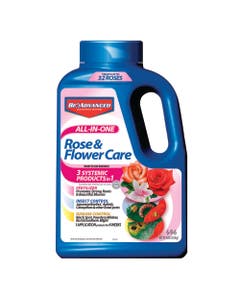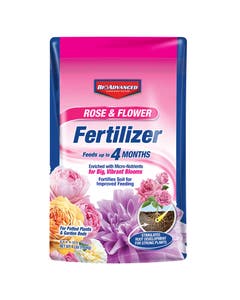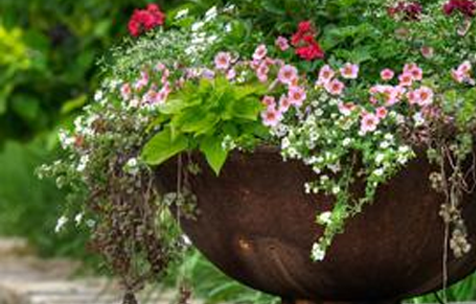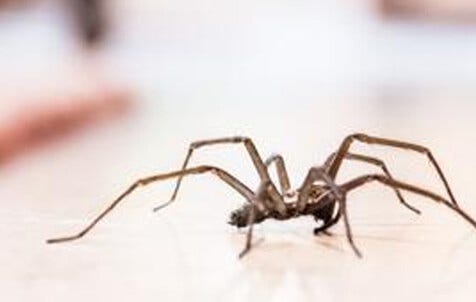

- Home
- Learning Article
- Rose & Flower
- Growing Roses: Ground Cover Roses
Growing Roses: Ground Cover Roses
Hardworking and undemanding, ground cover roses package the beauty of the cherished flower in a plant that spreads and spills across the ground. These roses typically offer easy-care natures with disease-resistant leaves and continuous flowering throughout the growing season.
These short, sprawling plants usually grow from 1-3 feet tall and spread wider than their height (from 3-6 feet or more). Some ground-cover roses lack fragrance, but flower number more than makes up for lack of scent.
Planting Tips
- Choose a sunny site – the more sun, the more flowers.
- Make sure soil drains well.
- Amend soil with organic matter.
- Space roses according to label recommendations.
Beat Weeds
Many traditional ground covers, such as Vinca, Pachysandra and English Ivy, form a thick mat that defeats weeds. Ground-cover roses don't blanket soil with weed-smothering foliage, even at the height of the growing season. (And in the dormant season, stems may be completely leafless.) Weeds frequently poke through spreading stems and often emerge near the base of the rose. To deter weeds:
- Consider planting through landscape fabric available in nurseries and garden centers. Install drip irrigation on top of the fabric.
- Maintain a mulch layer on soil (or landscape fabric) beneath sprawling stems.
- Apply a pre-emergent herbicide to planting beds in early spring and fall to interrupt weed seed germination.
Landscape Uses
Hardworking ground-cover roses fill many roles in the landscape. Add these rugged beauties where you want low-growing, continuous color. Choices might include:
- Edging a path or planting bed
- Massed in a bed to create a swath of color
- Covering a slope
- Cascading over a wall
- Forming a low barrier to foot traffic
- Along a driveway, where low growth won't block sight
Planting rose as ground cover should be done carefully. Don’t forget, these plants will be leafless and a bit on the rangy side during the dormant season, and they do need the same care as regular roses. Start with a small planting, say three, five or seven plants and judge the results.
Types of Ground-Cover Roses
Blanket Roses
Disease-resistant foliage, continuous blooming, restrained growth.
Size: 2 feet high by 2-6 feet wide.
Hardiness: Hardiness varies by cultivar, but all are hardy to USDA Zone 4-10.
Tip: Depending on cultivar, form can be more arching than spreading. Research before planting.
Drift Roses
Disease-resistant foliage, continuous blooming, naturally dwarf.
Size: 1.5 feet high by 2-3 feet wide.
Hardiness: USDA Zone 4-10
Tip: Prune to 6-12 inches high in early spring for compact growth
Flower Carpet Roses
More mounding than spreading. To cover ground, use in a mass planting. Disease-resistant foliage, continuous blooming, thorny canes, drought-tolerant once established.
Size: 3-3.5 feet high by 2-3 feet wide.
Hardiness: USDA Zone 5-10, but reported to survive to USDA Zone 3.
Tip: Prune to one-third size in early spring. Mulch in USDA Zones 3-4.
Meidiland Roses
Several cultivars work as ground covers: White Meidiland, Fire Meidiland (red), Ruby Meidiland, Red Meidiland and Magic Meidiland (magenta pink).
Size: 2-3 feet high, 2-6 feet wide
Hardiness: Most are hardy to USDA Zone 4-10.
Tip: Meidilands are more aggressive, vigorous roses – an excellent choice for covering a hillside. Not for small spaces.
Shrublet Roses
Shorter roses with a more mounded, bushy form (rather than spreading). Varieties include Gourmet Popcorn (white/yellow center), Rabble Rouser (yellow), Teeny Bopper (red and white) and What a Peach (apricot).
Size: <30 inches
Hardiness: Hardy to USDA Zone 5-10.
Tip: To cover ground, use in a mass planting.
Miscellaneous Roses
Shrub roses with sprawling growth can be used as ground covers, as can climbing roses grown without supports. Examples include: Sea Foam (white), Red Cascade (red) and Yellow Ribbons (yellow).
Learn more about other types of roses available and basic rose pruning tips.




__(1).jpg)









